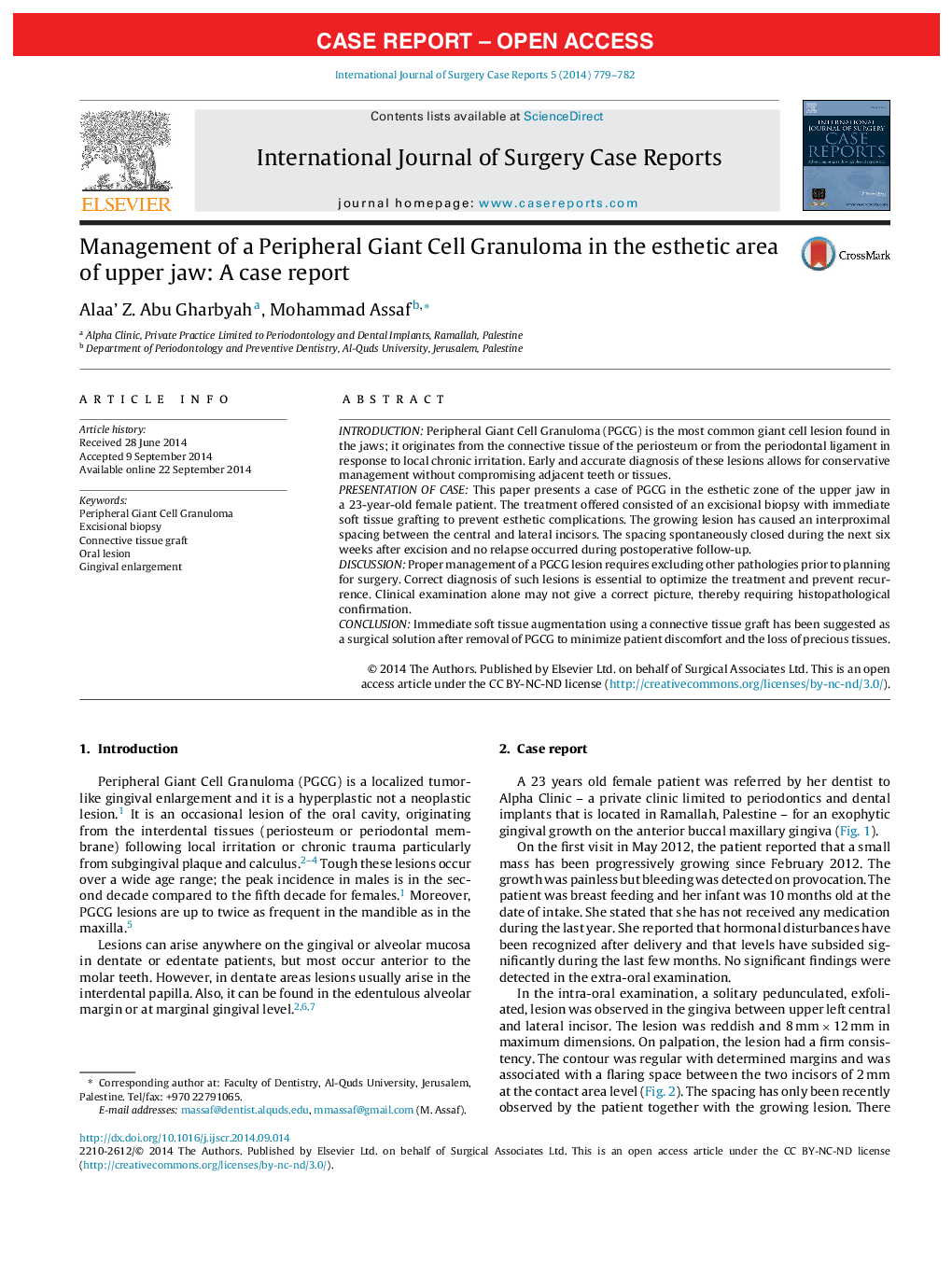| Article ID | Journal | Published Year | Pages | File Type |
|---|---|---|---|---|
| 4289531 | International Journal of Surgery Case Reports | 2014 | 4 Pages |
•Peripheral Giant Cell Granuloma not responding to non-surgical treatment.•Peripheral Giant Cell Granuloma surgical excision reversed the tooth migration caused by the lesion.•Connective tissue grafting to prevent esthetic complications.
INTRODUCTIONPeripheral Giant Cell Granuloma (PGCG) is the most common giant cell lesion found in the jaws; it originates from the connective tissue of the periosteum or from the periodontal ligament in response to local chronic irritation. Early and accurate diagnosis of these lesions allows for conservative management without compromising adjacent teeth or tissues.PRESENTATION OF CASEThis paper presents a case of PGCG in the esthetic zone of the upper jaw in a 23-year-old female patient. The treatment offered consisted of an excisional biopsy with immediate soft tissue grafting to prevent esthetic complications. The growing lesion has caused an interproximal spacing between the central and lateral incisors. The spacing spontaneously closed during the next six weeks after excision and no relapse occurred during postoperative follow-up.DISCUSSIONProper management of a PGCG lesion requires excluding other pathologies prior to planning for surgery. Correct diagnosis of such lesions is essential to optimize the treatment and prevent recurrence. Clinical examination alone may not give a correct picture, thereby requiring histopathological confirmation.CONCLUSIONImmediate soft tissue augmentation using a connective tissue graft has been suggested as a surgical solution after removal of PGCG to minimize patient discomfort and the loss of precious tissues.
